実施日 : 2020年02月04日(火) - 05日(水)
Mozu-Furuichi Kofun Group (Osaka) Press Tour
投稿日 : 2020年01月15日
― Registered on the UNESCO World Heritage List ―
1600-year-old burial mounds preserved in a city of one million
-The tour will take aerial photos of the 49 kofun from a helicopter
-How cultural properties can be preserved for the future alongside development
-The techniques of modern knife artisans with roots in the Kofun Period
Osaka Prefecture has the third largest economy in Japan. Kofun (burial mounds) from around 1600 years ago are located in an area with a population of one million close to Osaka City. 49 of these kofun were registered on the UNESCO World Heritage List in July 2019. When deciding to add them to the list, many of the kofun remaining in close to their original condition despite being in a densely populated urban area was viewed positively.
 These mounds were for the clans of the kings ruling Japan at the time, and include one of the largest tombs mounds in the world. The kofun are distinctive for the height the mounds were built up to using earth. The site was called the Mozu-Furuichi Kofun Group as the mounds are primarily located in the two neighboring districts of Mozu and Furuichi. This area was a gateway for interaction with the rest of Asia in ancient Japan, and prospered as a base for bringing in foreign culture. The grave goods which have been excavated from the kofun show influences from China and the Korean Peninsula, indicating the exchange that occurred with those regions.
These mounds were for the clans of the kings ruling Japan at the time, and include one of the largest tombs mounds in the world. The kofun are distinctive for the height the mounds were built up to using earth. The site was called the Mozu-Furuichi Kofun Group as the mounds are primarily located in the two neighboring districts of Mozu and Furuichi. This area was a gateway for interaction with the rest of Asia in ancient Japan, and prospered as a base for bringing in foreign culture. The grave goods which have been excavated from the kofun show influences from China and the Korean Peninsula, indicating the exchange that occurred with those regions.
These kofun were beloved and protected by local residents over generations. However, during the postwar economic boom there was also a period in which they were under risk from development.
―― I. 1600-Year-Old Burial Mounds Preserved in a City of One Million ――
 On this press tour, the group will take aerial photos of the kofun from a helicopter. The tour will also cover Japan’s largest kofun, the keyhole-shaped Nintoku-tenno-ryo Kofun, and local residents who live alongside the kofun.
On this press tour, the group will take aerial photos of the kofun from a helicopter. The tour will also cover Japan’s largest kofun, the keyhole-shaped Nintoku-tenno-ryo Kofun, and local residents who live alongside the kofun.
―― II. Preserving Culturale Properties for the Future Alongside Development ――
In the rapid postwar development that took place in the 1950s, some kofun were destroyed, but one was saved by residents writing petitions and raising funds. The tour will visit the Itasuke Kofun, and speak with a local 87-year-old dentist/researcher who was active in those efforts. The tour will also visit the Tsudo-shiroyama Kofun, where some of its original area is now private property, and cover the local government’s efforts to purchase this property. The tour will also be able to see the restoration of excavated grave goods.
―― III. Efforts by Local Governments and Businesses After Registration on the World Heritage List ――
The tour will also cover a local government’s plan to stimulate tourism of the kofun and a local business manufacturing kofun merchandise.
―― IV. The Techniques of Modern Knife Artisans with Roots in the Kofun Period ――
Sakai, where the Nintoku-tenno-ryo Kofun is located, has a 90% share of the domestic market for professional kitchen knives. The roots of this industry are said to lie in the blacksmithing skills developed in manufacturing the hoes, plows, and other tools used to build the kofun. The tour will cover a local knife maker who carries on these techniques from the Kofun Period.
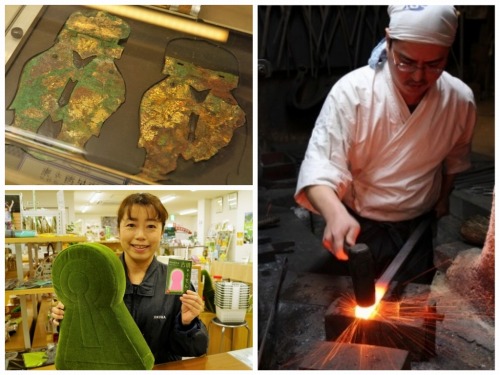
*This press tour is sponsored by Osaka Prefecture, and planned and operated by the FPCJ.
【Tour Details】
-----------------------------------------------------------------------------------------------------------------
I. 1600-Year-Old Burial Mounds Preserved in a City of One Million
-----------------------------------------------------------------------------------------------------------------
1. Aerial Photographs from a Helicopter
49 kofun built 1600 years ago preserved in a city of one million
-Unique burial mounds developed in a center for exchange with the rest of East Asia
http://www.mozu-furuichi.jp/en/
https://www.bunka.go.jp/seisaku/bunkazai/shokai/sekai_isan/ichiran/pdf/r1419077_02.pdf
There are 89 kofun built in the late fourth and fifth century located in the Mozu-Furuichi area which covers three of Osaka Prefecture’s cities (Sakai, Habakino, and Fujiidera: Total population of one million). Of these, the 49 which remain closest to their original state were registered on the UNESCO World Heritage List.
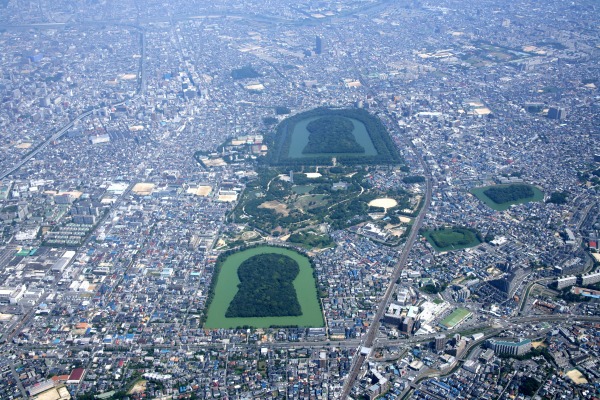
The Mozu-Furuichi Kofun Group are burial mounds for the clans of kings who ruled in Japan at the time at engaged in diplomacy with powers in China and on the Korean Peninsula, and they are distinctive for the height to which the earth was piled to make them.
These kofun are located in the Osaka Plain, one of the centers for Japanese political culture when they were made, and the area was also a key location for exchange with China and the Korean Peninsula, making it a center for exchange with foreign cultures. The kofun, built on plateaus, face Osaka Bay, the gateway connecting maritime routes to those other lands, and were built so that the ships could see them. It is thought that the location was chosen for its effect in impressing visitors from East Asia and other powers within Japan.
■ The press tour will ride helicopters to film and photograph the kofun from above. It will be possible to see the many kofun surrounded by homes and buildings, and see their distinctive shapes, such as keyhole-shaped kofun.
(*The photos will be through the windows of the helicopter, which cannot be opened.)
2. The Largest Tomb in Japan, Shaped Like a Keyhole
Nintoku-tenno-ryo Kofun / Mr. Gen Miyoshi, Archaeologist, Osaka Prefecture Cultural Properties Preservation Section
-A giant tomb on the scale of the Pyramid of Khufu and the Mausoleum of the First Qin Emperor
http://www.mozu-furuichi.jp/jp/img/promotion/allure/leaflet_001/eng04.pdf
https://www.city.sakai.lg.jp/smph/kanko/hakubutsukan/mozukofungun/kofun.html#cmsNINHYA03
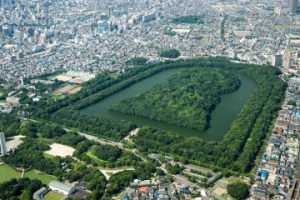 The Nintoku-tenno-ryo Kofun in Sakai is the largest tomb in Japan, and most well-known of the Mozu-Furuichi Kofun Group. It has been described as one of the world’s three great tombs, alongside the Pyramid of Khufu and the Mausoleum of the First Qin Emperor, and when it comes to the length of the mound it is the largest of the three. With a unique keyhole shape, it is thought that a great king who ruled Japan (Wa) is buried there. It is not confirmed, but it is said the 16th Emperor of Japan, Emperor Nintoku, is buried there, and the Imperial Household Agency is in charge of the kofun.
The Nintoku-tenno-ryo Kofun in Sakai is the largest tomb in Japan, and most well-known of the Mozu-Furuichi Kofun Group. It has been described as one of the world’s three great tombs, alongside the Pyramid of Khufu and the Mausoleum of the First Qin Emperor, and when it comes to the length of the mound it is the largest of the three. With a unique keyhole shape, it is thought that a great king who ruled Japan (Wa) is buried there. It is not confirmed, but it is said the 16th Emperor of Japan, Emperor Nintoku, is buried there, and the Imperial Household Agency is in charge of the kofun.
The mound is 486 meters long and 35.8 meters high, with a total area of around 480,000 square meters including the triple moat surrounding it. Construction is estimated to have involved 6.8 million people, with up to 2,000 people working on it each day over 15 years and 8 months. This is another indication of the authority wielded by the king who ordered the creation of the kofun.
■ The tour will have a view of the kofun from the front while listening to an explanation from an expert.
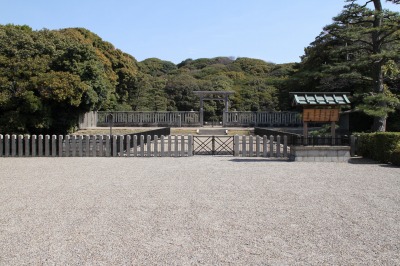
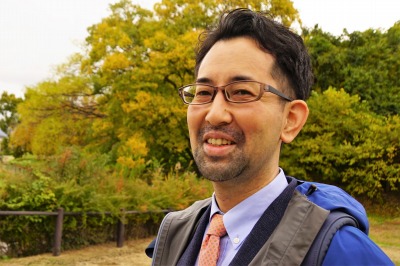
3. Kofun Beloved and Protected by Residents Over Generations
Mr. Toshio Kusano (66), Secretary General, Nintoku-ryo o Mamoritai (volunteer cleaning group)
-A history of coexistence between people’s lives and cultural properties
One of the unique characteristics of the Mozu-Furuichi Kofun Group is that these 1600-year-old kofun have been preserved in a densely populated urban area. Their existence has been a part of people’s lives for generations.
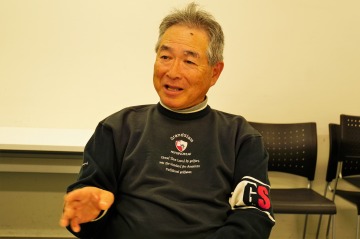 The Nintoku-tenno-ryo Kofun, Japan’s largest kofun, is warmly referred to by residents as “Nintoku-san.” Until around 1900, local residents would enter the kofun’s grounds as part of their daily life, to cut trees and collect firewood. Thanks to these efforts the kofun’s original shape remained intact, in a history of coexistence.
The Nintoku-tenno-ryo Kofun, Japan’s largest kofun, is warmly referred to by residents as “Nintoku-san.” Until around 1900, local residents would enter the kofun’s grounds as part of their daily life, to cut trees and collect firewood. Thanks to these efforts the kofun’s original shape remained intact, in a history of coexistence.
Mr. Toshio Kusano (66), an officer of a local community association, explained, “This kofun is our pride. For people who grew up around here, it has been beside us throughout our lives. We were happy to hear that the local community having preserved the kofun was viewed positively during the deliberations about registering them on the World Heritage List.” According to Mr. Kusano, generations of local residents have cleaned the area around the kofun. The volunteer group Mr. Kusano is in charge of also carries out large scale clean-ups twice a year, with 300 to 500 people participating each time.
■ The tour will interview Mr. Kusano, leader of a cleaning group, in front of the Nintoku-tenno-ryo Kofun.
-----------------------------------------------------------------------------------------------------------------
II. Preserving Cultural Properties for the Future Alongside Development
-----------------------------------------------------------------------------------------------------------------
1. Local Citizens Protecting Kofun from Destruction by Development
Itasuke Kofun / Mr. Susumu Miyakawa (87)
-Lessons learned from protecting cultural properties in conflict with economic development
http://www.mozu-furuichi.jp/jp/img/promotion/allure/leaflet_001/eng04.pdf
Itasuke Kofun in Sakai was saved from destruction at the last minute by a grassroots effort. The area was reduced to scorched earth by air raids during World War II, and had a lack of housing after the war. A developer bought the land, and intended to destroy the kofun to turn it into residential land. This occurred in 1955, when postwar reconstruction and economic growth was proceeding at a fever pitch. Many kofun on privately owned landed were swallowed up by development around the same time. A concrete bridge was made to Itasuke Kofun by the developer so trucks could cross over and begin construction.
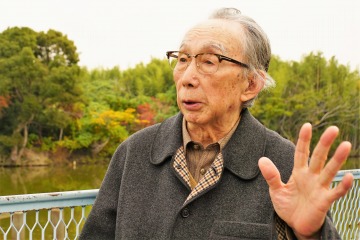
Some people who learned of this worked to prevent it. Mr. Susumu Miyakawa (87), a dentist and archaeologist, was one of them. A university student at the time, together with other young researchers he called for the kofun to be preserved. The movement became popular, and many residents signed petitions. They also collected donations totaling 600,000 yen (worth around 3.5 million yen today). In response, the City of Sakai decided to buy the kofun from the developer, and it narrowly avoided destruction.
According to Mr. Miyakawa, “At the time, some people thought getting rid of the kofun would help the area develop, but now everyone is glad the kofun is still here. This shows how you can only rely so far on the opinions and knowledge of a specific time. It is necessary to take a long-term view, and decide whether a building that won’t last 100 years is more important than preserving a 1600-year-old cultural property.”
The bridge built for the construction remains to this day as a reminder of the experience. A helmet-shaped haniwa excavated from Itasuke Kofun has become the symbol for the preservation of cultural properties in Sakai.
■ In front of Itasuke Kofun, the tour will interview Mr. Miyakawa (87), who helped protect the kofun from being destroyed. There will also be the opportunity to photograph the concrete bridge which was left behind as a lesson to future generations.
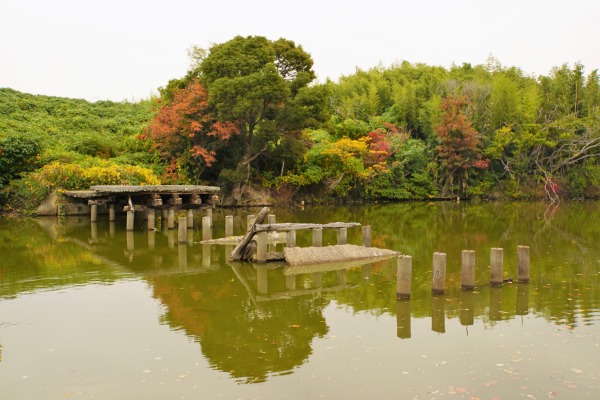
2. Policy for Government Purchase of Kofun (Private Property)
Tsudo-shiroyama Kofun / Official with the City of Fujiidera
-A long-term project to restore a kofun to its original state over one or two hundred years
http://www.mozu-furuichi.jp/jp/img/promotion/allure/leaflet_001/eng04.pdf
https://www.city.fujiidera.lg.jp/rekishikanko/shiteibunkazai/kunifusiteibunkazai/1474416893371.html
The Tsudo-shiroyama Kofun in Fujiidera was built in the late fourth century, and in addition to viewing it from the outside it is possible to walk around its grounds as well. With seasonal flowers such as Japanese irises, plum, and cherry blossoms, it is a park-like place for locals to relax. A burial chamber was found in this kofun, and the objects excavated included mirrors, weapons, and a massive stone coffin.
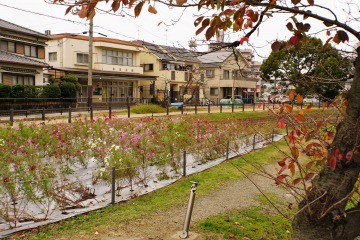
Only one moat remains surrounding the kofun, but archeological surveys have shown that there was originally another moat outside that one as well, indicating that the total area would have been significantly larger than it is now. Over time, people stopped thinking of it as a kofun, and fields and homes were built on its grounds.
The City of Fujiidera began a policy in the 1960s to speak with landowners and gradually buy all the land up to the kofun’s original borders. As a result of these efforts, part of the area (around 42,600 square meters)has become public property, moving it closer to its original state. The local government has stated, “Over the next one or two hundred years, we would like to restore the kofun to its original state with the understanding of the residents.” This long-term plan to preserve a cultural property continues.
■ The tour will enter the kofun’s grounds, and climb atop the mound, along with an explanation from officials with Osaka Prefecture and the City of Fujiidera. The tour will also see a scale replica of the stone coffin excavated from this kofun.
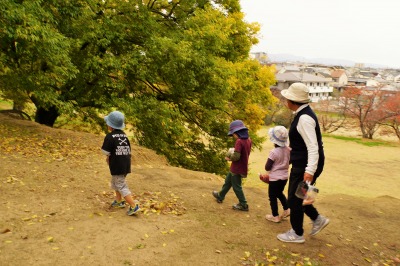
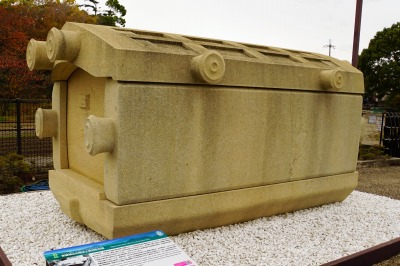
3. Restoration of Rare Excavated Goods to Preserve Them for Future Generations
Habikino City Cultural Property Maintenance and Exhibition Office / Mr. Masahiro Ito, Associate Manager
-Grave goods demonstrating the level of exchange with China and the Korean Peninsula
https://www.city.habikino.lg.jp/soshiki/shougaigakushu/bunkazaihogoka/bunkazai/siryoukan/6743.html
One of the unique characteristics of kofun is that they contain many haniwa, clay objects made in cylindrical shapes or representing people, animals, or houses. Along with these haniwa, many iron swords and other weapons, as well as bronze ornaments, have been excavated from kofun.
In each of the cities composing the Mozu-Furuichi Kofun Group, there are experts restoring the grave goods excavated from the kofun. Small fragments dug up from the ground are carefully washed and categorized, then joined together to restore them to their original shape in an exhaustingly long process.

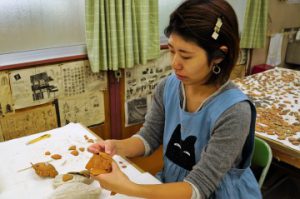
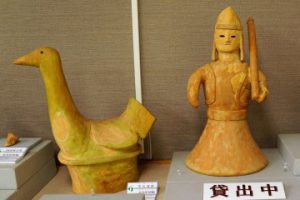
Excavated goods which have been restored are then displayed so residents can see them. Mr. Masahiro Ito, a cultural property specialist who works for the City of Habikino, explained, “Cultural properties can not be protected by the government alone. Everyone in the area has to understand their value and want to protect them. That is why there is meaning in restoring these cultural properties and displaying them. In order to preserve them for the future, I would like children in particular to learn about the rare objects in their hometown.” The city arranges opportunities for local elementary and junior high school students to observe the restoration process.
During the Kofun Period, Japan did not have the technology to produce iron, and it was imported from the Korean Peninsula. The advanced techniques to process that iron and turn it into swords and tools also came to Japan from China via the Korean Peninsula. The climbing kiln used to bake the haniwa also came to Japan from the Korean Peninsula. The different goods excavated from kofun show the influence of those regions on Japan 1600 years ago, and the level of exchange that existed with the rest of East Asia.
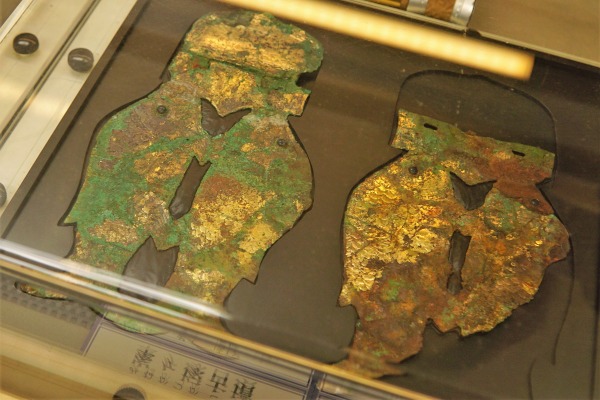
■ The tour will visit the Habikino City Cultural Property Maintenance and Exhibition Office and be able to film and photograph excavated goods being restored. There will also be an opportunity to film and photograph various goods demonstrating the exchange that existed with China and the Korean Peninsula, along with an explanation by Mr. Ito.
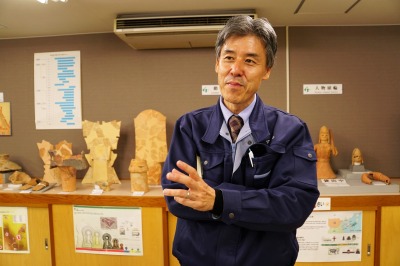
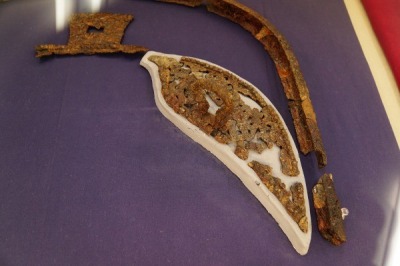
-----------------------------------------------------------------------------------------------------------------
III. Efforts by Local Governments and Businesses
After Registration on the World Heritage List
-----------------------------------------------------------------------------------------------------------------
1. Local Governments Efforts to Increase Tourism Using World Heritage Sites
Sakai City's Haniwa Bucho/CHO (Chief Haniwa Officer)
-Demonstrating the appeal of kofun using VR and other methods
https://www.city.sakai.lg.jp/smph/shisei/koho/citypromo/haniwa/index.html
As part of their efforts to have the Mozu-Furuichi Kofun Group registered on the World Heritage List, the three cities of Sakai, Habikino, and Fujiidera where it is located carried out various promotional efforts. One of the more unique initiatives was Sakai’s Haniwa Kacho.
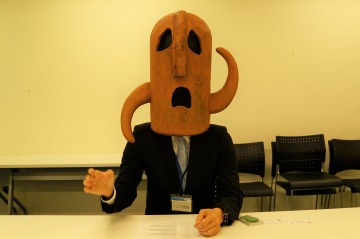 City employees were faced with the issue of the kofun being so large that it is difficult to see their shape from the ground, and so most people did not understand their appeal. In an effort to have regular people become interested in Kofun, in 2016 Sakai created a new city employee, Haniwa Kacho, dressed in a business suit with a haniwa for a head. The impact of this surreal image led to Haniwa Kacho being widely covered in the media, and he was very active in promoting kofun, becoming quite popular. (After the site being registered on the World Heritage List, he was promoted from kacho to bucho in August 2019.)
City employees were faced with the issue of the kofun being so large that it is difficult to see their shape from the ground, and so most people did not understand their appeal. In an effort to have regular people become interested in Kofun, in 2016 Sakai created a new city employee, Haniwa Kacho, dressed in a business suit with a haniwa for a head. The impact of this surreal image led to Haniwa Kacho being widely covered in the media, and he was very active in promoting kofun, becoming quite popular. (After the site being registered on the World Heritage List, he was promoted from kacho to bucho in August 2019.)
Haniwa Bucho explained that now that the kofun have been registered as a heritage site, “The issue is how to ensure tourists can see the keyhole-shaped kofun in an entertaining fashion.” Using VR and other methods, efforts are underway to demonstrate the magnificence of the kofun and what they looked like when they were being built.
■ The tour will hear from Sakai’s Haniwa Bucho about using cultural properties to promote tourism.
2. A Shop Selling Various Kofun Goods, Where You Can Make Haniwa
Okuraya--Kawachi Konda Haniwa-no Sato
-Local business stimulating the tourism in the area
http://okura-hd.jp/haniwanosato/index.html
Okuraya, a shop in Habikino surrounded by three kofun, sells original stationary and other products using kofun and haniwa as a motif, as souvenirs for tourists visiting the kofun. The shop was opened in April 2019 by a local printing company that wanted to create a place where people could enjoy the kofun more easily.
 One of the key attractions of Okuraya is its haniwa making event. Visitors can shape clay and make haniwa as people in the past did. The company president and all the staff are passionate about kofun, and also visit preschools to teach the children how to make haniwa. The shop also has “haniwa bento” with the ingredients making the shape of a keyhole kofun.
One of the key attractions of Okuraya is its haniwa making event. Visitors can shape clay and make haniwa as people in the past did. The company president and all the staff are passionate about kofun, and also visit preschools to teach the children how to make haniwa. The shop also has “haniwa bento” with the ingredients making the shape of a keyhole kofun.
■ The tour will visit Okuraya and see haniwa making, as well as the various products using kofun and haniwa as a motif. For lunch, the tour will eat haniwa bento.

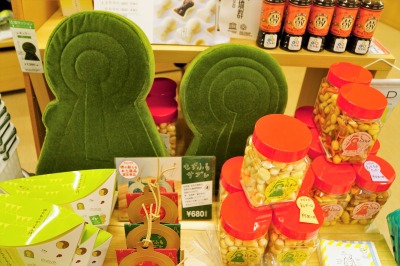
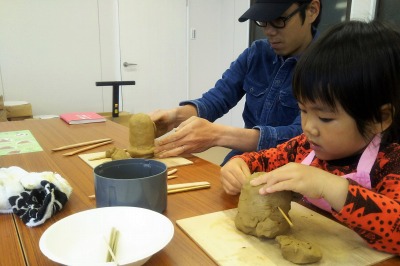
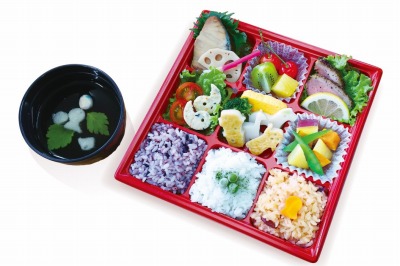
(Lower two photos: ©Okuraya)
-----------------------------------------------------------------------------------------------------------------
IV. The Techniques of Modern Knife Artisans with Roots in the Kofun Period
-----------------------------------------------------------------------------------------------------------------
1. Sakai Knives, Roots in the Kofun Period Passed on to the Modern Age
Mr. Jun Mizuno (43), 5th-Generation Master Smith, Mizuno Tanrenjo
-The techniques of artisans with 90% of the domestic market share for professional chef’s knives
https://www.sakai-tcb.or.jp/feature/detail/18
Sakai, where the Nintoku-tenno-ryo Kofun is located, has long been a major producer of blades. It is known for beating heating steel to craft blades one at a time by hand. Known for their excellent cutting edge, Sakai knives account for 90% of the domestic market for professional chef’s knives. In recent years, with Japanese food growing in popularity around the world, many chefs have also begun to visit Sakai from overseas.
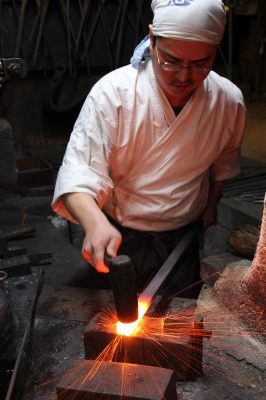 The root of the knife-making techniques in Sakai are said to be in the construction of the Nintoku-tenno-ryo Kofun. As the construction of the massive kofun was carried out over many years, artisans making hoes, plows, and other iron tools used in the construction moved to Sakai, leading to the development of blacksmithing techniques in the area.
The root of the knife-making techniques in Sakai are said to be in the construction of the Nintoku-tenno-ryo Kofun. As the construction of the massive kofun was carried out over many years, artisans making hoes, plows, and other iron tools used in the construction moved to Sakai, leading to the development of blacksmithing techniques in the area.
Mizuno Tanrenjo, founded in 1872, maintains this tradition. Mr. Jun Mizuno (43), the fifth-generation owner of Mizuno Tanrenjo, explained about making knives, “Every part of the process is difficult, such as controlling the temperature of the steel. You cannot let your guard down.” Mr. Mizuno insists on selling his products in face-to-face direct sales. “Since they are buying something that will last their entire lives, I want to speak with the person using it and choose the best option for them. I will continue to perform maintenance on knives after I sell them.”
With many overseas fans from Asia and the West, 70% of Mizuno Tanrenjo’s sales come from overseas customers. A YouTube video of someone cutting through phonebooks using a knife made by Mr. Mizuno became very popular, with over 130,000 views.
(Photo: ©Mizuno Tanrenjo)
■ The tour will visit Mizuno Tanrenjo and interview Mr. Mizuno, the fifth-generation owner, as well as having an opportunity to film and photograph sparks flying as a knife is made.
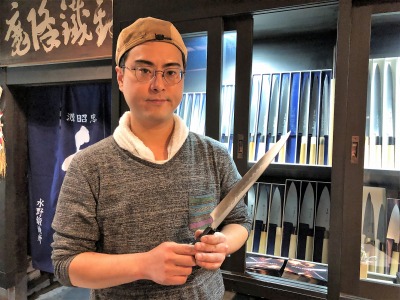
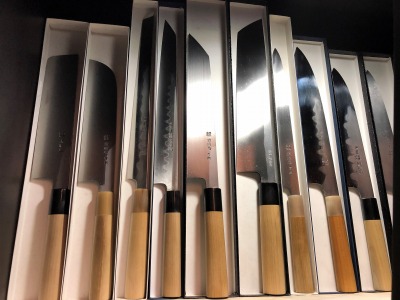
【Tour Itinerary】
1. Tour Dates: Tuesday, February 4 and Wednesday, February 5, 2020
【Day 1】
| 7:30-10:00 | Tokyo to Shin-Osaka (Nozomi Shinkansen) |
| 11:30-13:00 | Photographing from helicopter |
| ⇒<See and photograph entire kofun> | |
| 13:40-14:30 | Nintoku-tenno-ryo Kofun (briefing + photographing exterior) |
| ⇒<Japan’s largest kofun> | |
| 14:30-15:00 | Interview with Mr. Toshio Kusano of Nintoku-ryo o Mamoritai |
| ⇒<A kofun beloved and protected by residents over the years> | |
| 15:15-16:00 | Itasuke Kofun (photograph exterior) +Interview with Mr. Susumu Miyakawa |
| 16:10-17:00 | Continue interview with Mr. Miyakawa (indoors) |
| ⇒<Kofun protected from destruction due to development by grassroots effort> | |
| 17:00-17:45 | Interview with Sakai’s Haniwa Bucho |
| (Mascots from Osaka Prefecture, Habikino, and Fujiidera will also participate) | |
| ⇒<Local government efforts and tourism promotion after World Heritage registration> | |
| 18:15 | Arrive at hotel (in Sakai) |
| 19:00 | Dinner |
【Day 2】
| 8:45 | Depart hotel (in Sakai) |
| 9:30-11:00 | Tsudo-shiroyama Kofun |
| ⇒<Government purchasing private land to preserve cultural property> | |
| 11:15-12:45 | Habikino City Cultural Property Maintenance and Exhibition |
| ⇒<Restoration of excavated goods/Meaning of displaying grave goods> | |
| 13:00-13:45 | Haniwa bento lunch at Okuraya |
| 13:45-14:45 | Okuraya's Haniwa making workshop and haniwa merchandise |
| ⇒<Efforts by local businesses> | |
| 15:25-17:00 | Mizuno Tanrenjo (knife making) |
| ⇒< Sakai knives with roots in the Kofun Period> | |
| 18:33-21:03 | Shinkansen: Shin-Osaka to Tokyo |
2. Qualification: Bearer of Gaimusho Press Registration Card
3. Participation Fee: 10,000 yen per person including transportation, accommodation and meals.
*It is possible to participate on this tour for one day only as well. In that case, the participation fee will be 5,000 yen, including transportation and meal.
(FPCJ will later inform the participants of methods for payment, cancellation fee, etc.)
4. Participants: Limited to 8 applicants.
(Only one reporter or one photographer from each company, but two participants from each TV team will be acceptable.)
*If the number of applicants exceeds 8, an upper limit may be set on the number of participants from each country/region.
5. FPCJ Contact: Ms. Chika Yoshida (Tel: 03-3501-5251)
6. Remarks:
(1)There may be some restrictions on photographing and filming at the tour sites. Please follow the instructions of the staff in charge.
(2)Neither the organizer nor FPCJ will be liable for any inconvenience, trouble or accidents that might occur during the tour.
(3)This tour will require participants to bear part of the cost, but is not a profit-making venture.
(4)The schedule is subject to change.



